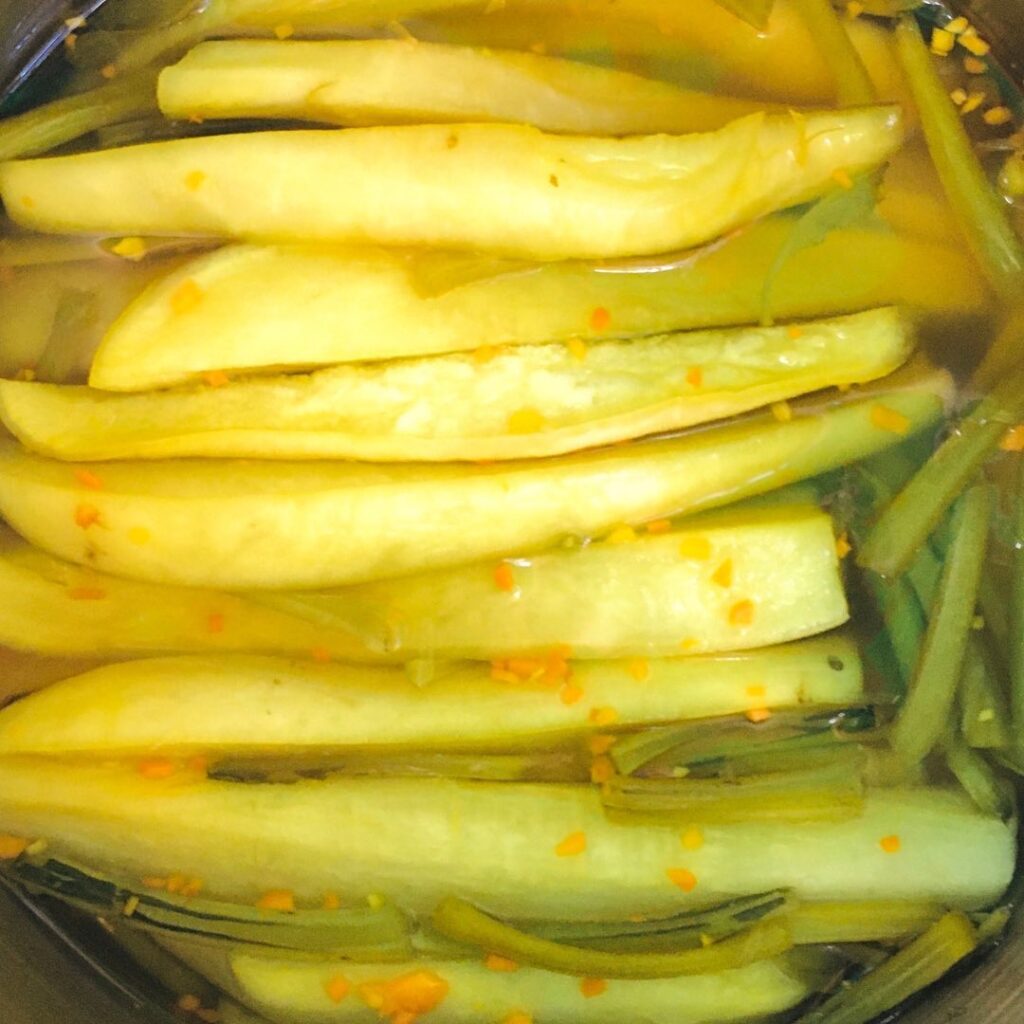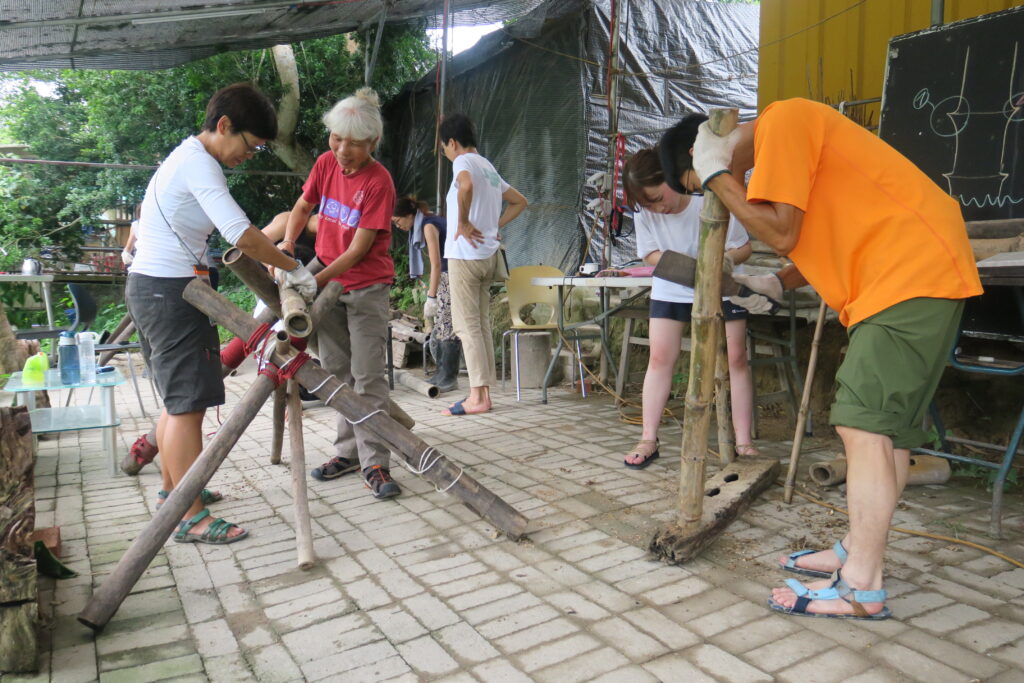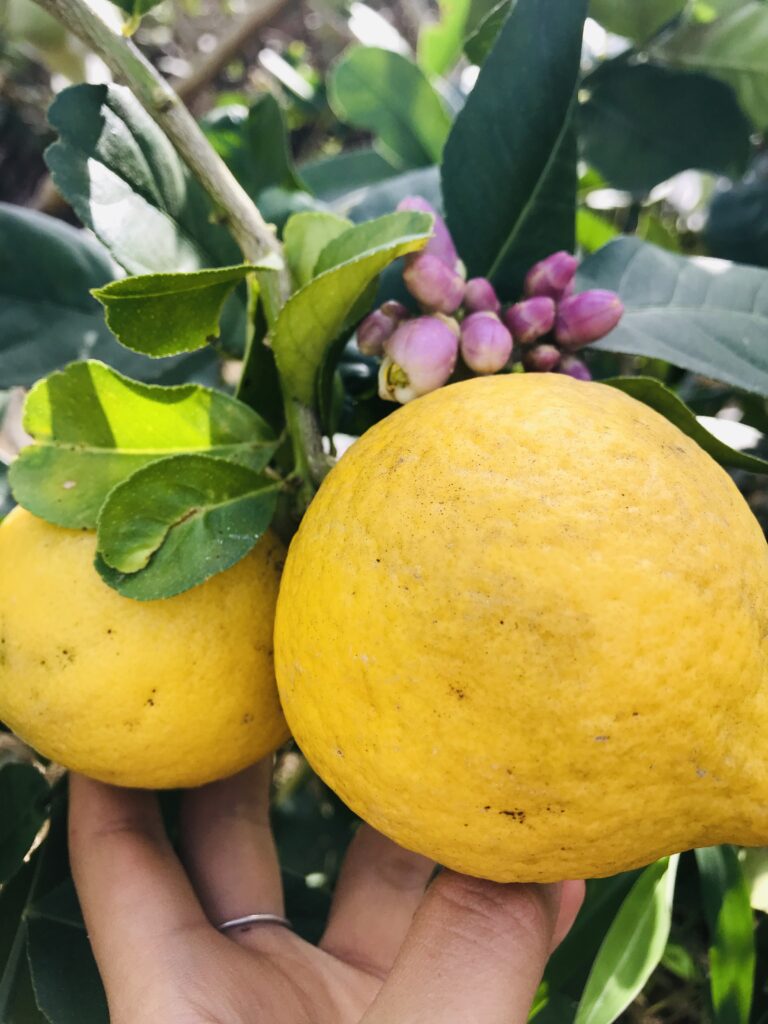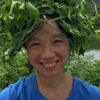Why These Hong Kong Urbanites Are Farming
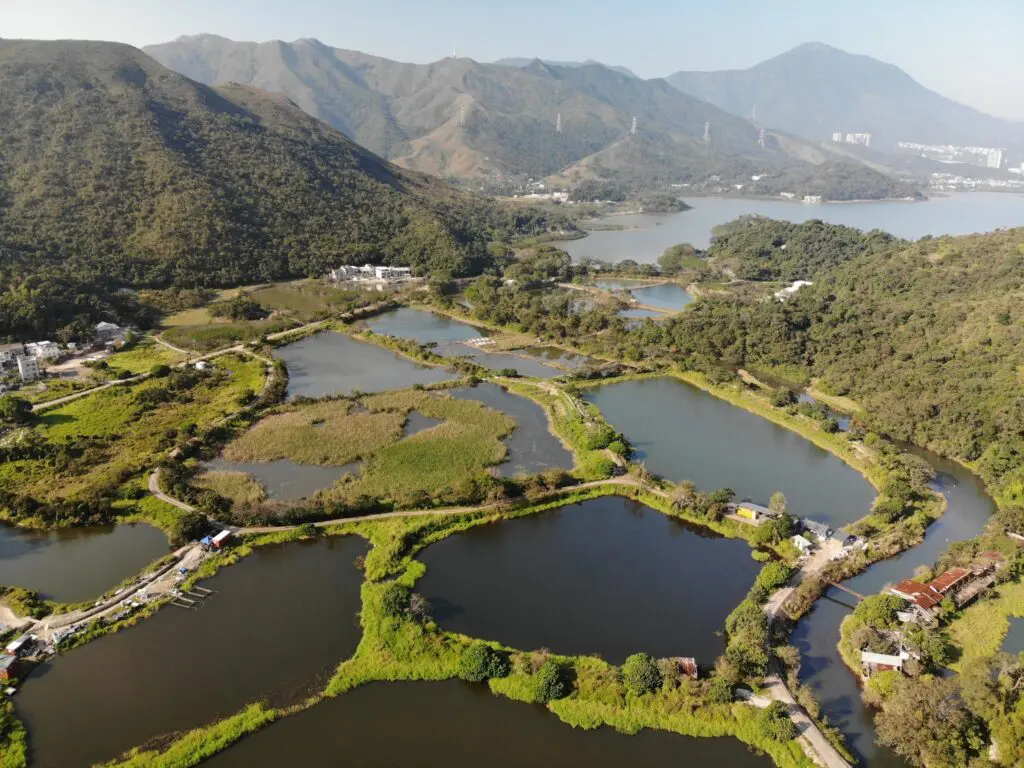
A HONG KONG ECOVILLAGE
One January morning, I gathered with a small group of people in a vegetable garden in Hong Kong. Shivering in the cold morning air, I changed into Wellington boots. I proceeded to kneel and start pulling Chinese turnips out of the muddy ground. As we dug in, cold bodies and hands warming up, we became more aware of the work of nature all around us.
“Oh gosh, just look at this giant turnip!” I jumped up and yelled, holding it high. The others looked up at the huge vegetable in appreciation, their hands still in the dirt.
We had come together as members of an intentional ecovillage community in Nam Chung, in the rural outskirts of the city’s northeast New Territories. The Partnership for Eco-Agriculture and the Conservation of Earth, or PEACE, was established in 2013. Our group has the vision of promoting sustainability through education and farming in the densely populated metropolitan area of Hong Kong. I first got involved with PEACE as an intern in 2015, then became a full-time resident member in 2020.
As the morning went on, more PEACE community members joined us. We repeated the movements of bending over, straightening back up, then carefully placing the harvested turnips on the grass nearby to allow the mud to dry.
Meanwhile, others began placing the turnips into crates and carrying them away to be weighed and recorded. During a short break, we exchanged recipes and discussed how the fat, elongated turnips would be best for the dishes we were planning for the coming Lunar New Year celebrations. One ecovillage member, Jinny, kindly brought some crunchy golden yellow turnip pickles to share.
We harvested around 900 catties of Chinese turnips in winter 2022—an impressive number considering almost all farm work was done manually. [1] [1] A catty, or kati, is a unit of measurement used across much of East and Southeast Asia, often used for weighing produce. The turnips were PEACE’s contribution to a farm-to-table project called “HONG KONG ROBERT GO!” (“Robert Go” is the transliteration of “Lo Bak Go” in Cantonese, meaning “turnip cake”). This project borrows from the idea of community-supported agriculture (CSA), which creates direct links between local vegetable growers, food producers, and consumers.
Until the early 1990s, over half of the vegetables consumed by the Hong Kong population were grown locally. But this figure has dwindled since the U.K.’s handover of Hong Kong to China in 1997, as much cheaper, imported vegetables became available from mainland China. Rapid urbanization has diminished available farmland. Hong Kong now produces less than 2 percent of the vegetables consumed by the population as of 2021—a sign of an insecure and vulnerable food system.
In the last decade, however, Hong Kong has experienced a revival of farming—and PEACE is amid the forefront of these efforts. But the movement is about much more than just agricultural self-sufficiency. As I’ve learned from PEACE, working to build strong communities and create a more sustainable and resilient food system also offers hope for us in Hong Kong. We farm in the face of China’s tightening political and economic control and the ongoing global threats of climate catastrophe and biodiversity loss.
Through food, we’re helping to build a different kind of future.
NURTURING THE LAND
As an anthropologist, I started researching the Hong Kong ecovillage shortly after I moved to the community full time. I wanted to understand how PEACE came about and what the community wants to achieve.
PEACE members trace their origins to a series of protests that erupted in Hong Kong in 2009. They began in response to the building of a high-speed rail linking Hong Kong with Shenzhen and Guangzhou in mainland China. The rail project’s plan required demolishing Choi Yuen, a rural farming community in Hong Kong’s New Territories. Protestors drew a sharp contrast between the comparatively sustainable and resilient lifestyle of the farmer-villagers and the money-driven, urban, elite culture that high-speed rail represents.
As anthropologist Loretta Lou points out, the protests led some Hong Kong residents, especially those from younger generations, to start connecting with the still lively and once abundant agricultural past of the city. Some even started to experiment with alternative modes of living. These drew upon the principles of self-sufficiency, slowness, and simplicity that they associated with the community that had been lost to top-down development.
The Land Nurturers’ Movement was one such group that emerged out of the protests. With close to 100 supporters from all walks of life, the movement members pooled their money and knowledge. They wanted to save another New Territories village, Nam Chung, from being bulldozed and developed into a golf course by private enterprises. They bought a small plot of land as a base to start, then strategically rented plots of abandoned farmland from local landowners.
In the subsequent years, the risks of immediate destruction and large-scale development in Nam Chung seemed less likely. The movement’s founders decided to take a step forward by actively creating the Hong Kong ecovillage now known as PEACE.
PEACE is part of a global movement. According to the online platform Global Ecovillage Network (GEN), an ecovillage is “an intentional, traditional, or urban community that is consciously designed through locally owned participatory processes in all four dimensions of sustainability (social, culture, ecology, and economy) to regenerate social and natural environments.” There are currently more than 600 ecovillages and eco-communities around the world registered on the GEN database.
So far, PEACE is the only known active ecovillage project in Hong Kong.
CENTERING ORGANIC FOOD
PEACE currently has eight core members. Most rent existing houses near the community’s farmstead. Others live farther away and commute to the site on a regular basis. Each core member of the Hong Kong ecovillage is involved in a different dimension of work, but we frequently come together over our common enthusiasm for growing, preparing, and eating good food. Much of our collective work centers on PEACE’s organic vegetable garden; it’s small (about 2,000 square meters) and functions predominantly as a community garden for members.
Rows of raised beds produce seasonal vegetables such as Chinese turnips. We also grow a mix of perennial subtropical plants, including bananas, tapioca, taro, Cajun beans, pineapples, guavas, longan, lychee (the latter two are fruit trees specific to South China), and more. These plants grow to a mix of different heights and layers, with taller ones planted next to more shade-tolerant, ground-level crops.
This small-scale, multilayered, agroforestry approach to gardening is widely practiced by household gardeners in the tropical regions of Latin America and sub-Saharan Africa. The strategy helps build soil health, prevent runoff, and create microhabitats for pollinators. At any one point of the year, you can find up to 10 different crops in the ecovillage’s fields, diversifying production strategies and increasing local biodiversity.
With the grown food, we practice fermentation, canning and jamming, and artisanal cooking. We sell some produce through CSAs to enhance mutual support between farmers and consumers. We also provide farm-to-table experiences to the public when we can and arrange weekly communal dining within the community. The rest of the turnips we harvested this winter but didn’t sell through the CSA entered our community lunches in the form of warming turnip stews, soups, and stir-fries.
BUILDING A TRANSFORMATIVE CULTURE
As PEACE prepares to celebrate its 10th anniversary in April, we remain a young and budding eco-community. We’re uncertain how our village will evolve in the future.
We’re left wondering what our long-term impact will be amid political challenges brought by the Chinese national security law. Introduced in mid-2020, the law has weakened Hong Kong’s democracy and led to the arrest of numerous social activists and liberal political leaders. Due to this suffocating political atmosphere and other social and economic pressures, growing numbers of Hong Kong residents have emigrated in search of new opportunities.
As a place-based movement, PEACE members have increasingly delved into the question of how we can respond to such local and global challenges through growing food and growing community. When the COVID-19 pandemic hit Hong Kong in 2020, most PEACE members still met and were grateful to have access to fresh, abundant food and healthy soil.
My time living in the ecovillage and practicing land justice activism has reinforced my belief that to peacefully coexist with other beings on Earth, humans need to create a transformative culture based on living and learning together, starting in the here and now. In the years to come, our Hong Kong ecovillage members aim to continue living on the land. We hope to cultivate a network of like-minded people who recognize the need for deeper connections between humans and the natural world.
With the end of the turnip harvest season at PEACE, we know that spring has approached and once again it’s time to make plans for the coming year. The emerging dainty, greenish-yellow flower spikes of the Chinese tallow tree remind us of how our daily lives are attuned to nature’s rhythmic cycles. The gray herons, which are often seen standing still in the shallow waters near the garden in wintertime, have gradually disappeared. We bid them farewell, knowing that their new migratory journey has begun. The rows of raised beds now left empty will soon be filled up by a crop of green manure to replenish the soil.
The garden remains vibrant with life. I wish the same for the entire PEACE ecovillage community, including its people, animals, plants, and other beings. I look forward to the continued growth of a thriving, abundant eco-community in rural Hong Kong. It showcases how we can work in, with, and for nature—navigating our way together to tackle humanity’s challenges.

































